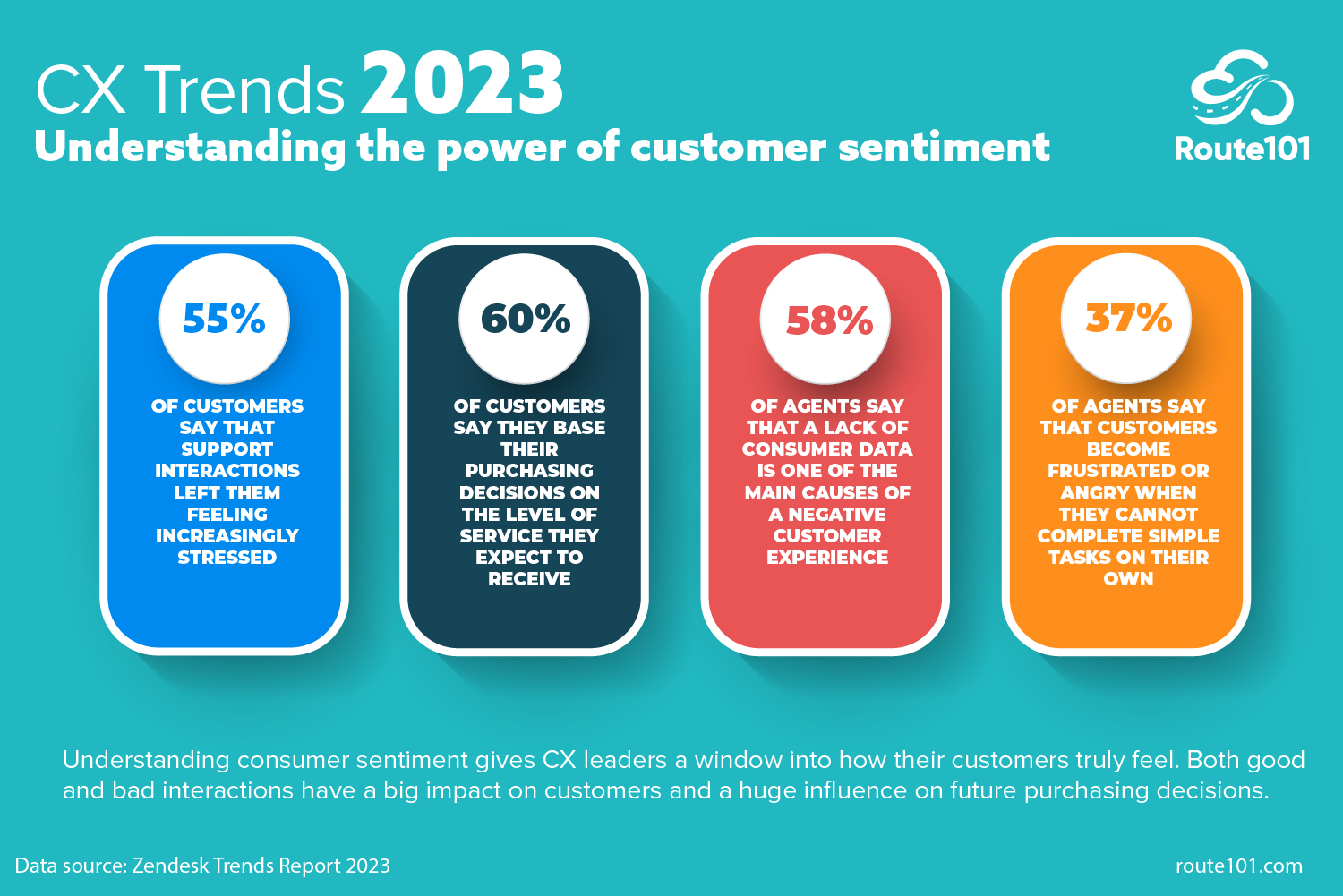Understanding consumer sentiment gives CX leaders a window into how their customers truly feel about their brand and forms the bedrock upon which better relationships are built. Both good and bad interactions have a big impact on customers and a huge influence on future purchasing decisions.
A lasting effect
According to Zendesk’s CX Trends report for 2023, last year saw customer frustration levels grow, with 55% saying that support interactions left them feeling increasingly stressed. When you consider that 66% of consumers said a bad interaction can ruin their day it is easy to see why these interactions can stick in the memory and influence any future purchases. In fact, 60% of those asked in the survey said they base their purchasing decisions on the level of service they expect to receive.
These statistics clearly show that bad interactions have a lasting effect on consumers, and they highlight how much that can affect a brand’s perception. It is vital for CX leaders to understand the sentiment of their customers, so they can identify any issues and take steps to rectify them.
Inadequate data & the self-service gap
However, many organisations are not collecting enough sentiment data to create a true idea of what their customers are thinking. Agents at the frontline often bear the brunt of any negative customer behaviour, with 53% of them reporting that their organisation’s customer service approach is the key driver in customer conduct. Due to informally collected sentiment data these same agents are seeing their organisations fail to remedy the issues, meaning the cycle of negative behaviour continues.
One key reason cited by agents for this service gap is incomplete data. Either the data is not there or it is not being serviced to them in an efficient manner leading to 58% of agents saying that a lack of consumer data was one of the main causes of a negative customer experience.
Another issue is the lack of adequate self-service options. Many consumers these days want to have agency in their support interactions and are more than happy to sort out issues for themselves. However, 37% of the agents surveyed said that customers become noticeably frustrated or angry when they cannot complete simple tasks on their own.
What can CX leaders do?
The good news is that there are powerful tools available that CX leaders can use to rectify the situation. For formally collecting and collating customer sentiment data CX leaders can use voice-of-the-customer (VOC) such as customer surveys to gauge opinions directly from the customer.
Alongside these surveys, organisations can use customer insight and speech analytics software. This software uses intelligent natural language sentiment analysis, qualitatively tracking trends and identifying the root causes of issues. This additional data can then be used as part of a robust quality management system that will help drive CX performance and reduce negative consumer interactions.
To help give customers agency in their service interactions, brands can also use self-service tools, such as knowledge bases and AI-powered chatbots. Tools such as these not only give customers the opportunity to solve issues for themselves but also reduce the strain on CX teams. If the customer is sorting out transactional issues on their own, then there is no need for a human agent to get involved, freeing up contact centres and allowing agents to focus on more complex tasks.
Route 101 have a full suite of tools designed to help you deliver customer service that exceeds expectation. If you want to find out more about how to gather customer sentiment data and provide a better service for your customers, get in touch or book a discovery call.




